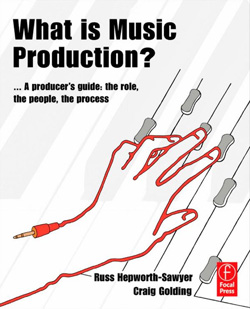
If the vocalist is still flat or sharp in places, then getting enough takes to create a comped vocal part may be necessary.
The success here could come from capturing the vocal in sections and a good engineer who is used to the comping process.
The alternative to this is to use pitch correction plugins; however, the amount that is needed might be considerable and therefore hard to conceal sonically speaking, making this a less than ideal fix. As a last resort you may need to consider getting another musician or vocalist to perform the part.
However, this can cause serious problems for the original performer, especially if part of a group. This is where a group discussion is necessary to establish a way forward.
Certainly replacing a lead vocalist is hardly ever an option due to the obvious tonal/performance differences that would be clearly evident. This makes the amount of time and patience a producer may need to expend on vocal tracking understandable.
Drummers and timing should go hand in hand, as it is what the job is all about. If a session drummer is being used then obviously this will never be a problem.
However, if working with a band, getting the drums tight and locking into the groove may at times prove difficult. A drummer may have a great musical feel but their timing might not be as tight as expected or needed.
There are various remedies for dealing with this issue and, as ever, making sure the headphone mix is right should be the first port of call. Maybe more bass in the cans really helps the drummer to “lock in” for example.
Tracking the rhythm section together “live” (i.e., drums, bass, and rhythm guitar) might also prove more successful in capturing a tight drum groove than overdubbing to a guide track, as this is the way that the band are used to playing their individual parts.
Further options that some producers may consider are playing to a click or a tempo locked loop. If the former is something that the drummer in question has no experience of, then it’s probably not going to help a great deal.
Listening to a very sterile click in the cans and trying to play a part musically takes some getting used to.
Playing to a tempo-matched loop of some kind may prove more successful. If the loop itself has a good groove, then the drummer may be able to play along in time and play or feel the part in a more musical way, and therefore the performance aspect can be captured also.
Of course, as anyone interested in music production will know, there are now very accurate and reasonably quick ways in which a drum track can be edited and quantized, therefore making it very possible for an out-of-time drum part to be manipulated into time (Beat Detective, Elastic Audio, etc.).
However, the result can sometimes lack real human feel (despite the ability to now dial this into a quantized part). The alternative to this is to comp a drum part together from sections of other takes where it is in time, hopefully achieving one complete ‘in time’ take.
With any of these issues a positive vibe and approach is often needed to raise the energy levels of a session, and here knowing what makes the people you are working with tick helps. (As mentioned previously, this is where taking the time to get to know individuals can really pay off.)
Learning what makes the artist react can be a very useful piece of knowledge to acquire and can enable you as the producer to deal with these issues on a case-by-case basis.
With all these things, the need to maintain a perspective based on the initial intentions of the session is important. As the producer you are the objective keeper of the vision for the project, therefore while it’s fine to allow the artist/ band to explore different or new musical ideas or do just one more take, you are the person responsible for steering the path and keeping proceedings on track. Any deviation from this is your call.
